Curcumin treatment leads to better cognitive and mood function in a model of Gulf War Illness with enhanced neurogenesis, and alleviation of inflammation and mitochondrial dysfunction in the hippocampus
- PMID: 29454881
- PMCID: PMC7023905
- DOI: 10.1016/j.bbi.2018.01.009
Curcumin treatment leads to better cognitive and mood function in a model of Gulf War Illness with enhanced neurogenesis, and alleviation of inflammation and mitochondrial dysfunction in the hippocampus
Abstract
Diminished cognitive and mood function are among the most conspicuous symptoms of Gulf War Illness (GWI). Our previous studies in a rat model of GWI have demonstrated that persistent cognitive and mood impairments are associated with substantially declined neurogenesis, chronic low-grade inflammation, increased oxidative stress and mitochondrial dysfunction in the hippocampus. We tested the efficacy of curcumin (CUR) to maintain better cognitive and mood function in a rat model of GWI because of its neurogenic, antiinflammatory, antioxidant, and memory and mood enhancing properties. Male rats were exposed daily to low doses of GWI-related chemicals, pyridostigmine bromide, N,N-diethyl-m-toluamide (DEET) and permethrin, and 5-minutes of restraint stress for 28 days. Animals were next randomly assigned to two groups, which received daily CUR or vehicle treatment for 30 days. Animals also received 5'-bromodeoxyuridine during the last seven days of treatment for analysis of neurogenesis. Behavioral studies through object location, novel object recognition and novelty suppressed feeding tests performed sixty days after treatment revealed better cognitive and mood function in CUR treated GWI rats. These rats also displayed enhanced neurogenesis and diminished inflammation typified by reduced astrocyte hypertrophy and activated microglia in the hippocampus. Additional studies showed that CUR treatment to GWI rats enhanced the expression of antioxidant genes and normalized the expression of multiple genes related to mitochondrial respiration. Thus, CUR therapy is efficacious for maintaining better memory and mood function in a model of GWI. Enhanced neurogenesis, restrained inflammation and oxidative stress with normalized mitochondrial respiration may underlie better memory and mood function mediated by CUR treatment.
Keywords: Curcumin; Gulf War Illness; Hippocampal neurogenesis; Memory impairment; Mitochondria; Mood dysfunction; Neuroinflammation; Oxidative stress; Reactive oxygen species.
Published by Elsevier Inc.
Figures

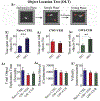

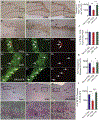
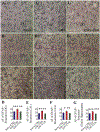
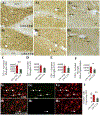
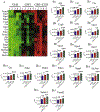
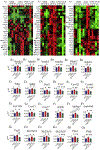
Comment in
-
The potential of treating Gulf War Illness with curcumin.Brain Behav Immun. 2018 May;70:3-4. doi: 10.1016/j.bbi.2018.03.017. Epub 2018 Mar 13. Brain Behav Immun. 2018. PMID: 29548999
Similar articles
-
Monosodium luminol reinstates redox homeostasis, improves cognition, mood and neurogenesis, and alleviates neuro- and systemic inflammation in a model of Gulf War Illness.Redox Biol. 2020 Jan;28:101389. doi: 10.1016/j.redox.2019.101389. Epub 2019 Nov 18. Redox Biol. 2020. PMID: 31778892 Free PMC article.
-
FDA-approved cannabidiol [Epidiolex®] alleviates Gulf War Illness-linked cognitive and mood dysfunction, hyperalgesia, neuroinflammatory signaling, and declined neurogenesis.Mil Med Res. 2024 Aug 22;11(1):61. doi: 10.1186/s40779-024-00563-2. Mil Med Res. 2024. PMID: 39169440 Free PMC article.
-
Mood and memory deficits in a model of Gulf War illness are linked with reduced neurogenesis, partial neuron loss, and mild inflammation in the hippocampus.Neuropsychopharmacology. 2013 Nov;38(12):2348-62. doi: 10.1038/npp.2013.158. Epub 2013 Jun 28. Neuropsychopharmacology. 2013. PMID: 23807240 Free PMC article.
-
Gulf War Illness: Mechanisms Underlying Brain Dysfunction and Promising Therapeutic Strategies.Pharmacol Ther. 2021 Apr;220:107716. doi: 10.1016/j.pharmthera.2020.107716. Epub 2020 Oct 24. Pharmacol Ther. 2021. PMID: 33164782 Free PMC article. Review.
-
Dysregulation of cellular energetics in Gulf War Illness.Toxicology. 2021 Sep;461:152894. doi: 10.1016/j.tox.2021.152894. Epub 2021 Aug 10. Toxicology. 2021. PMID: 34389359 Review.
Cited by
-
Pathophysiological basis and promise of experimental therapies for Gulf War Illness, a chronic neuropsychiatric syndrome in veterans.Psychopharmacology (Berl). 2023 Apr;240(4):673-697. doi: 10.1007/s00213-023-06319-5. Epub 2023 Feb 15. Psychopharmacology (Berl). 2023. PMID: 36790443 Review.
-
The peroxisome proliferator-activated receptor gamma (PPARγ) agonist, rosiglitazone, ameliorates neurofunctional and neuroinflammatory abnormalities in a rat model of Gulf War Illness.PLoS One. 2020 Nov 13;15(11):e0242427. doi: 10.1371/journal.pone.0242427. eCollection 2020. PLoS One. 2020. PMID: 33186383 Free PMC article.
-
A Placebo-Controlled, Pseudo-Randomized, Crossover Trial of Botanical Agents for Gulf War Illness: Curcumin (Curcuma longa), Boswellia (Boswellia serrata), and French Maritime Pine Bark (Pinus pinaster).Int J Environ Res Public Health. 2021 Mar 3;18(5):2468. doi: 10.3390/ijerph18052468. Int J Environ Res Public Health. 2021. PMID: 33802272 Free PMC article. Clinical Trial.
-
Effects of Lacosamide Treatment on Epileptogenesis, Neuronal Damage and Behavioral Comorbidities in a Rat Model of Temporal Lobe Epilepsy.Int J Mol Sci. 2021 Apr 28;22(9):4667. doi: 10.3390/ijms22094667. Int J Mol Sci. 2021. PMID: 33925082 Free PMC article.
-
Chlorpyrifos- and Dichlorvos-Induced Oxidative and Neurogenic Damage Elicits Neuro-Cognitive Deficits and Increases Anxiety-Like Behavior in Wild-Type Rats.Toxics. 2018 Dec 1;6(4):71. doi: 10.3390/toxics6040071. Toxics. 2018. PMID: 30513797 Free PMC article.
References
-
- Abou-Donia MB, Conboy LA, Kokkotou E, El-Masry EM, Jacobson E, Sullivan K, 2017. Screening for novel central nervous system biomarkers in Veterans with Gulf War Illness. Neurotoxicol Teratol. 61, 36–46. - PubMed
-
- Abdel-Rahman A, Shetty AK, Abou-Donia MB, 2002. Disruption of the bloodbrain barrier and neuronal cell death in cingulate cortex, dentate gyrus, thalamus, and hypothalamus in a rat model of Gulf-War syndrome. Neurobiol. Dis 10, 306–326. - PubMed
-
- Abdullah L, Crynen G, Reed J, Bishop A, Phillips J, Ferguson S, Mouzon B, Mullan M, Mathura V, Mullan M, Ait-Ghezala G, Crawford F, 2011. Proteomic CNS profile of delayed cognitive impairment in mice exposed to Gulf War agents. Neuromolecular Med. 13, 275–288. - PubMed
-
- Bassani TB, Turnes JM, Moura ELR, Bonato JM, Coppola-Segovia V, Zanata SM, Oliveira RMMW, Vital MABF, 2017. Effects of curcumin on short-term spatial and recognition memory, adult neurogenesis and neuroinflammation in a streptozotocin-induced rat model of dementia of Alzheimer’s type. Behav. Brain Res 335, 41–54. - PubMed
Publication types
MeSH terms
Substances
Grants and funding
LinkOut - more resources
Full Text Sources
Other Literature Sources

